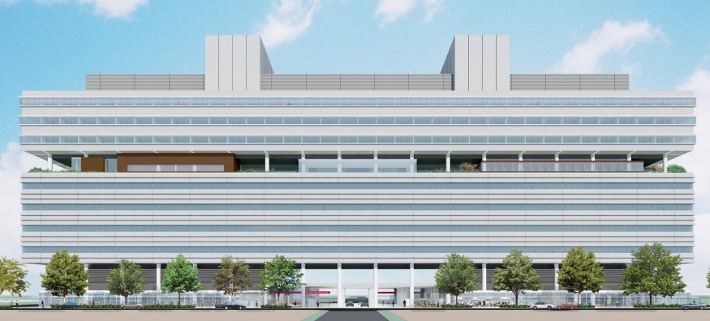Travel Nursing Companies – Their relationships with hospitals matter, Part 2
In our last blog post, we discussed how a travel nursing company’s “Direct Relationship” with a facility works and its potential ramifications for the travel nurse. In this post, we’ll discuss the “Vendor Management Service” relationship and the potential ramifications.
Travel nursing companies and Vendor Management Services
The Vendor Management Service relationship is a little more complex. This type of relationship is becoming more and more prevalent in the healthcare staffing industry on the whole. I have seen estimates claiming that over 90% of hospitals use Vendor Management Services to meet their contingent staffing needs. A Vendor Management Service relationship exists when a hospital, or hospital corporation, signs a contract with an organization to be the central source for the hospital’s contingent staffing needs. There are 3 types of Vendor Management Services prevalent in the healthcare staffing industry.
Travel nursing and Vendor Management Systems
The first is known as the Vendor Management System (VMS). A VMS is a web-based software application that provides a range of tools designed to allow hospitals to centrally manage their contingent staffing suppliers (healthcare staffing agencies).
Hospitals and their contracted agencies are able to log on to the website where they utilize the tools to conduct their business. The software can include job requisition management, interview scheduling, notification systems, credential management, invoice/billing management, timekeeping management, and other tools.
The companies that design and market the VMS typically offer training, customer service, and on-going support. Simply put, the hospital’s staff receives training on the software and puts it to use with customer service assistance from the VMS provider.
Such arrangements are routinely referred to as “vendor neutral.” This is the most important point regarding this arrangement. Again, the idea is that all the agencies that are contracted with the hospital through the VMS are supposed to receive equal treatment. This means that you have the same chance to land a job no matter which agency you choose.
For the hospital, this means that they stand the best chance of hiring the top available candidate because bias favoring certain agencies over others is removed. Examples of VMS companies include ShiftWise, Medefis, FieldGlass, and PeopleFluent. As of the writing of this blog post, it is estimated that over 1500 hospitals in the United States use a VMS.
Travel nursing and managed service providers
The second type of Vendor Management Service prevalent in the healthcare staffing industry is called a Managed Service Provider (MSP). An MSP manages virtually everything related to the hospital’s contingent staffing needs.
The MSP will manage all of the billing, timekeeping, credentialing, supplier management, on-boarding, and orientation. The MSP may also offer a guarantee on meeting the hospital’s staffing needs. So essentially, a VMS provides the hospital with the tools to manage all of these things on their own, whereas the MSP manages everything for the hospital.
In order to land such a contract, the MSP typically offers a very attractive Service Level Agreement that guarantees high staffing levels and lower costs. Consider how attractive this offer is. The MSP is offering to be the single point of contact for the hospital, as opposed to the hospital dealing with multiple, sometimes 50 to 100 agencies.
In addition, the MSP is guaranteeing that they will staff a very high percentage of the hospital’s jobs and supplemental staffing needs. For example, they might guarantee that 98% of all jobs will be filled at all times. If not, all payments for services are held in escrow until minimum levels are met, at which point, the payments are released to the MSP.
The MSP also offers the hospital standardized and often times much lower bill rates which saves the hospital money. Moreover, the MSP will take care of interviewing, credentialing, and on-boarding all contingent staff.
In return, the MSP typically receives a guarantee that all supplemental staffing needs will be handled through them. This is commonly referred to as exclusivity, or an exclusive agreement. And this is where we get to the key difference between the VMS and MSP as far as it pertains to the traveler.
Unlike the VMS, the MSP is never “vendor neutral.” This is because the MSP is itself an agency. These are typically larger companies like American Mobile Network (AMN), Cross Country, and Medical Staffing Network (MSN). To provide their services efficiently, MSPs will routinely utilize the services of a VMS. For example, as of the writing of this post, AMN is the MSP for Kaiser Permanente and AMN uses FieldGlass, a VMS, to manage their services.
But because even the largest of agencies may have difficulty meeting the staffing levels that are required by their Service Level Agreement with the hospital, the MSP will enlist the services of “Sub Vendors.” Sub Vendors are just agencies that obtain a contract with the MSP to provide travelers to the hospital. However, they can do so only through the MSP. In exchange, the MSP charges a fee that is typically between 1.5% and 4% of the MSP’s bill rate with the hospital.
Obviously, the MSP would prefer to fill every job themselves. If they do, they’ll make 15%-25% of the bill rate versus the 1.5%-4% they’ll receive if a sub-vendor fills a job. Therefore, the MSP is incentivized to favor its own candidates over those of their sub-vendors, hence the reason that this system is not vendor neutral.
Travel nursing and Group Purchasing Organizations / Hospital Associations
Group Purchasing Organizations (GPO) and Hospital Associations (HA) represent the third type of Vendor Management Service prevalent in the healthcare staffing industry. GPOs and HAs have differences from the hospital’s perspective. GPOs are organizations that have traditionally purchased goods and supplies in bulk in order to qualify for large price discounts from suppliers. In essence, the GPO is purchasing on behalf of multiple hospitals. The GPO then passes a percentage of the savings on to the hospital. At some point GPOs began applying this same model to the services that hospitals utilize, including contingent staffing.
HAs operate more like advocacy groups. Every state has HAs that hospitals can choose to be a member of. HAs offer legislative advocacy and information services to their member hospitals. Many HAs also provide services similar to that of a GPO either directly or through separate private organizations established by the HA. Contingent staffing management is one of the services that some HAs offer. For example, a large number of hospitals in Arizona utilize HAs to meet their contingent staffing needs.
Many HAs and GPOs have developed their own VMS technology to help them manage contingent staffing services. Broadlane is one such example. Others partner with VMS providers to help them manage their contingent staffing services. The most important thing to understand is that GPOs, HAs, and VMSs are all fairly similar from the travel nurse’s perspective. In other words, MSPs are different than VMSs, GPOs, and HAs.
Vendor Management Services and Vendor Neutrality
So, what does all this jargon mean for the travel nurse? The two most important aspects of Vendor Management Services as they pertain to travelers are vendor neutrality, and bill rates. These aspects differ for the travel nurse depending on whether the Vendor Management Service is an MSP or VMS/GPO/HA.
The VMS/GPO/HA model offers vendor neutrality. Again, this means that all agencies that have a contract with the hospital should be treated equally. All agencies should receive notification of new jobs at the same time. All agencies should have to jump through the same hoops and be subject to the same policies and procedures. Vendor neutrality is designed to ensure that the best candidates at the best price are selected rather than the candidates of the most favored agencies.
It’s important to note that there are those who contend that breakdowns in vendor neutrality can occur with the VMS/GPO/HA model just as they can with Direct Relationships. For example, Medefis, a VMS, is owned by the private equity group Welsh, Carson, Anderson, and Stowe which also owns Onward Healthcare, a large healthcare staffing agency. This relationship leads some to contend that Medefis can’t be vendor neutral in the strictest sense. However, Medefis maintains that it is vendor neutral. Additionally, there is no question that the prospect of vendor neutrality it greatest with the VMS/GPO/HA models.
By contrast, MSPs are never vendor neutral. Therefore, the process and mechanisms at work are much different. In a simple scenario, the hospital will contact the MSP to let them know that they need a traveler. The MSP will keep the job for themselves, typically for a period of 3 days to 2 weeks. During this time, the MSP’s recruiters will attempt to recruit candidates for the open job. If they are unsuccessful, the job will be released to the Sub Vendors who will recruit and submit any candidates they may have. At this point, both the MSP and the Sub Vendors attempt to recruit for the job until it is filled.
Sometimes, MSP’s may have preferred Sub Vendors, or they may have tiers of Sub Vendors. This means that when the MSP decides to release the order, they might release it to a preferred group of companies first, and then to others if the order is not filled in a certain period of time. Remember, by the time the open job gets released to Sub Vendors, the MSP’s recruiters have a head start. In addition, when the job gets released to Sub Vendors, the MSP may be flooded with submission profiles due to the large number of Sub Vendors. In any case, your competition to land the job becomes fierce.
Essentially, the MSP is the agency with first crack at the jobs. If you’re not working with the MSP, then you stand less of a chance at even knowing a job exists, let alone landing an interview. An opening may get filled by the MSP without your agency ever knowing about it. In addition, even after the order gets released to the Sub Vendors, the MSP still has an incentive to give preferential treatment to any of its candidates because the MSP stands to make more money placing its own candidates as opposed to a Sub Vendor’s candidate. Add to this the fact that the MSP charges the Sub Vendors a fee for doing business, which lowers the bill rate for the Sub Vendor thereby potentially lowering the pay for the travel nurse, and the MSP starts looking like the most attractive option for you to work with.
Vendor Management Services and the Bill Rate
In addition to differences in vendor neutrality, the MSP model also differs from the VMS/GPO/HA models when it comes to bill rates. Again, a bill rate is the hourly dollar amount that the agency charges for an hour of their nurses’ time at work. The bill rate is the single most important variable in determining how much the agency can pay.
MSPs offer “standardized” bill rates. This means that there is one rate for all workers with any given license covered by the contract. For example, all Registered Nurses have the same bill rate, all Physical Therapists have the same bill rate, and so on. It’s also possible for the licenses to be broken down by specialty and every so often by level of experience. For example, Medical Surgical and Telemetry Registered Nurses have one rate while all other Registered Nurses have another. Or, Registered Nurses with 1-3 years of experience get one rate, while those with more than 3 years of experience get a slightly higher rate. The important thing to understand is that standardized bill rates are set in stone by the contract for all intents and purposes. There is no possibility of negotiating a higher bill rate based on a particular travel nurse’s salary history or work experience.
With the VMS/GPO/HA models it’s at least remotely possible that a higher bill rate be negotiated on a case by case basis. I say “remotely possible” because many VMS/GPO/HA models may also have standardized bill rates and the trend in the industry strongly prefers standardized rates. In addition, these models provide hospitals with the tools to efficiently manage a large number of staffing agencies. Therefore, the competition for open jobs can be fierce. In this case, agencies and their travel nurses can expect to have great difficulty negotiating higher rates in a slack labor market, and a better chance at negotiating higher rates in a tight labor market.
The level of flexibility for the agency to negotiate a higher rate depends on the specific VMS/GPO/HA. Some services allow the hospital to specify a rate range for a specific job. Other services allow agencies to place a bid for the bill rate. Again though, these systems are typically designed to help hospitals reduce costs, so it’s difficult to bid the rates up, especially in a slack labor market.
We’ll discuss when and how to put all of the information regarding hospital-agency relationships to use in our next blog post.






can you list the travel nursing companies who do not use these?
Any idea what % of hospitals use MSP vs VMS/GPO/HA?
I haven’t seen any exact figures. However, some of American Mobile’s quarterly earnings reports indicate that as much as 40% of their revenue is generated from MSP/VMS. My experience indicates that large hospital corporations like HCA and Kaiser are more likely to use MSPs. I hope this helps!